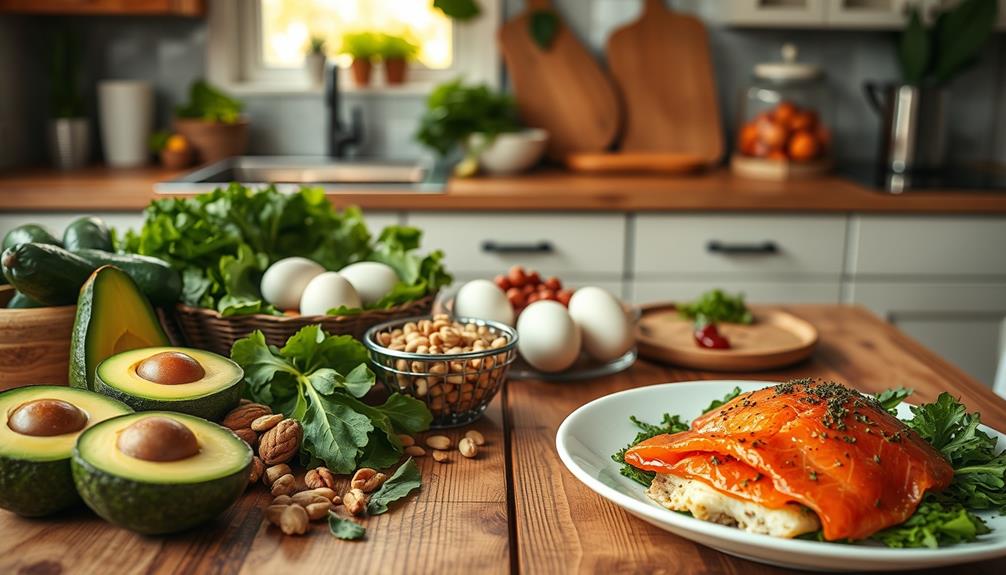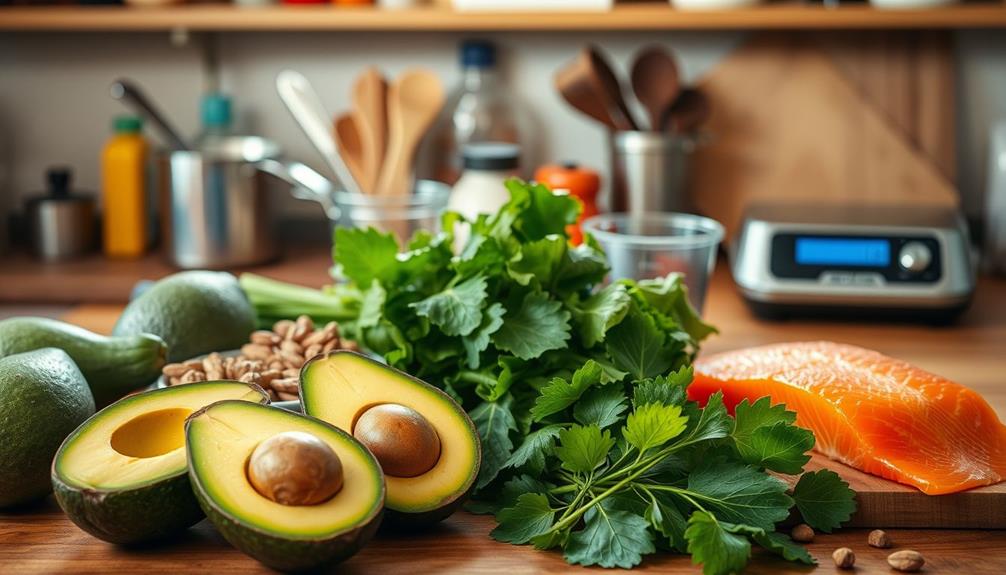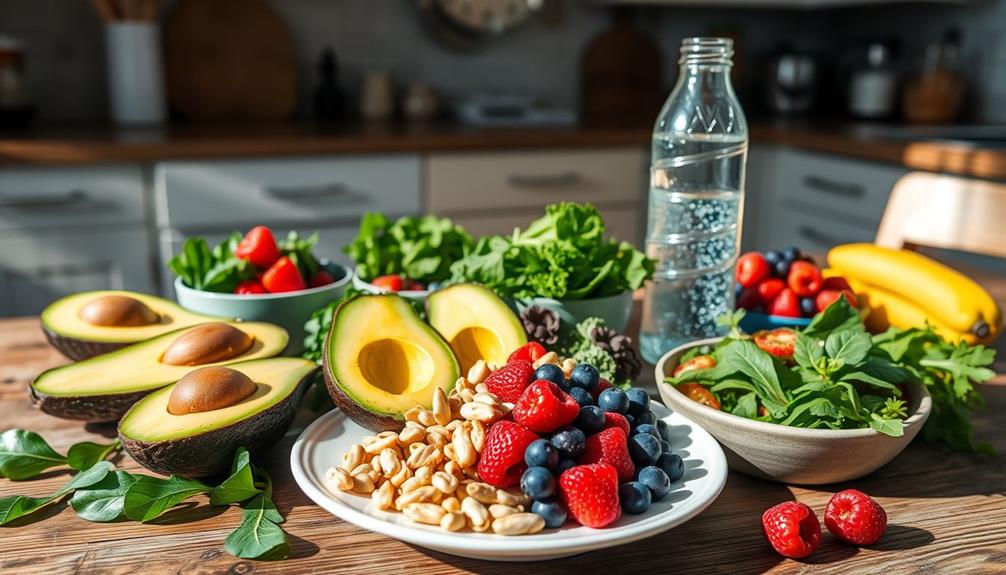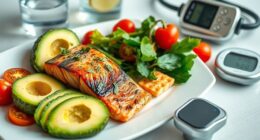The best keto diet for beginners is a simple low-carb, high-fat plan that limits your daily carb intake to 20-50 grams. Start with the standard ketogenic diet, which consists of around 70% fat, 20% protein, and only 10% carbohydrates. Focus on whole foods like fatty meats, eggs, and low-carb veggies while avoiding sugary items and grains. Meal planning can make your shift smoother—think avocado and eggs for breakfast or grilled chicken with broccoli for dinner. Staying hydrated is essential, too. You'll discover more tips to make your keto journey easier and more effective if you keep exploring. If you find cooking at home challenging, consider dining out at top ketofriendly restaurants that offer delicious low-carb options. Many establishments now cater to the keto crowd, with menu items like bunless burgers, grilled fish, and salads with high-fat dressings. Before you know it, navigating the keto lifestyle will become second nature to you. Keep an open mind, stay committed, and soon you’ll be reaping the rewards of your hard work.
Key Takeaways
- Start with the Standard Ketogenic Diet (SKD), focusing on 70% fat, 20% protein, and 10% carbohydrates for effective results.
- Limit daily carbohydrate intake to 20-50 grams, emphasizing non-starchy vegetables and healthy fats for optimal ketosis.
- Include foods like fatty cuts of meat, eggs, full-fat dairy, avocados, and nuts while avoiding sugary items and grains.
- Stay hydrated with 6-8 glasses of water daily and replenish electrolytes to mitigate initial side effects like the keto flu.
- Meal planning is essential; consider simple meals such as avocado and eggs for breakfast or grilled chicken with broccoli for dinner.
Overview of the Keto Diet

Understanding the ketogenic diet can transform how you approach eating. The keto diet is a high-fat, low-carb eating plan that typically consists of 70-75% fat, 20-25% protein, and only 5-10% carbohydrates. By limiting your carbohydrate intake to about 20-50 grams daily, you can enter a metabolic state called ketosis, where your body shifts from burning glucose to burning fat for fuel.
This low-carb diet has gained popularity not just for weight loss but also for its potential health benefits, such as improved insulin sensitivity. You might notice rapid weight loss in the first week due to glycogen depletion and water loss.
However, to maintain ketosis and reap the benefits, tracking your macronutrient intake is essential. Balancing your fat, protein intake, and fiber consumption will help you stay on track.
As you begin this journey, focus on high-quality fats and proteins while being mindful of your carbohydrate intake. Embracing the ketogenic lifestyle can lead to a healthier, leaner you, as long as you stay committed to your dietary goals.
Types of Ketogenic Diets
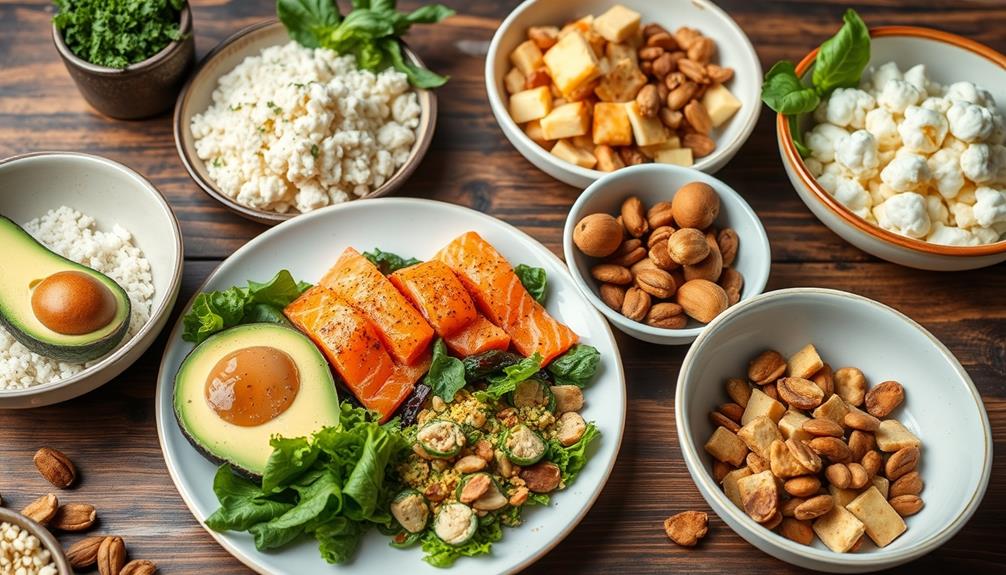
Once you grasp the basics of the keto diet, you'll find various approaches to suit your lifestyle and goals.
The most common of the types of ketogenic diets is the Standard Ketogenic Diet (SKD), which typically consists of 70% fat, 20% protein, and 10% carbohydrates. This diet is well-researched and focuses on maintaining a state of ketosis.
If you prefer some flexibility, consider the Cyclical Ketogenic Diet (CKD). This approach allows for five days of strict keto followed by two days of higher carbohydrate intake. It's a great way to enjoy variety while still promoting ketosis.
For those who engage in high-intensity training, the Targeted Ketogenic Diet (TKD) might be ideal. It permits carbohydrate consumption around workout times, giving you the quick energy you need for performance.
Lastly, if you want to maintain muscle mass, the High-Protein Ketogenic Diet (HPKD) features a macronutrient ratio of 60% fat, 35% protein, and 5% carbohydrates.
Each type can be tailored to fit your personal lifestyle and health objectives, allowing you to choose what works best for you.
Foods to Include and Avoid
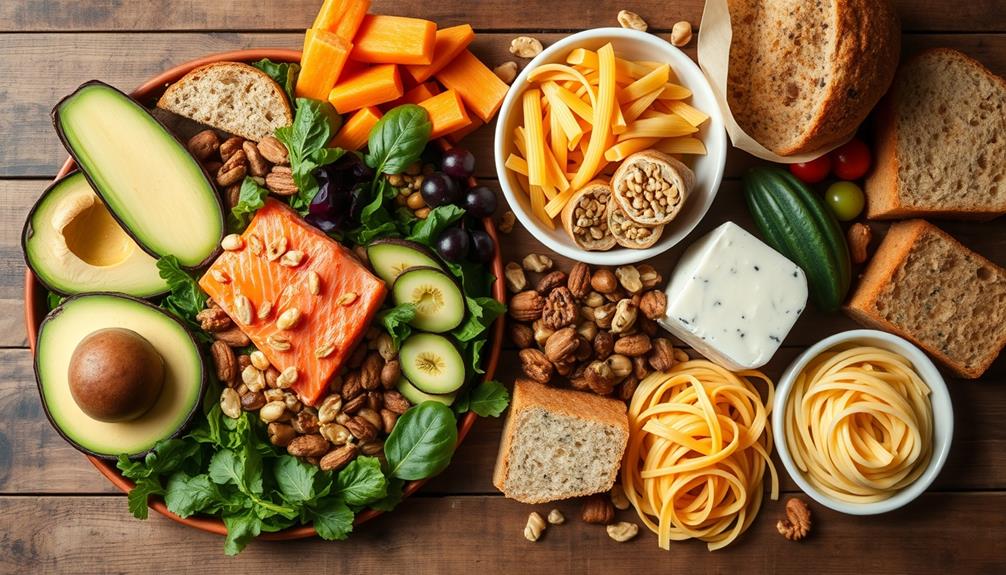
When starting on the keto diet, knowing which foods to include and which to avoid is essential for maintaining ketosis. Your goal is to consume a high-fat diet while limiting carbs to 20-50 grams per day. This means focusing on healthy fats and non-starchy veggies.
Here's a quick guide to help you:
| Foods to Include | Foods to Avoid |
|---|---|
| Fatty cuts of meat | Sugary items (soda, candy) |
| Eggs | Grains (bread, pasta) |
| Full-fat dairy (cheese) | Most fruits (except berries) |
| Avocados, nuts, seeds | Starchy vegetables (potatoes) |
Opt for full-fat, unprocessed dairy options like heavy cream, which supports your keto lifestyle. Always be diligent about reading labels to identify hidden sugars and carbs in packaged foods. Avoiding sugary foods and grains is vital for preventing blood sugar spikes and staying in the metabolic state of ketosis. By sticking to these guidelines, you'll set yourself up for success on your ketogenic diet journey.
Health Benefits and Risks
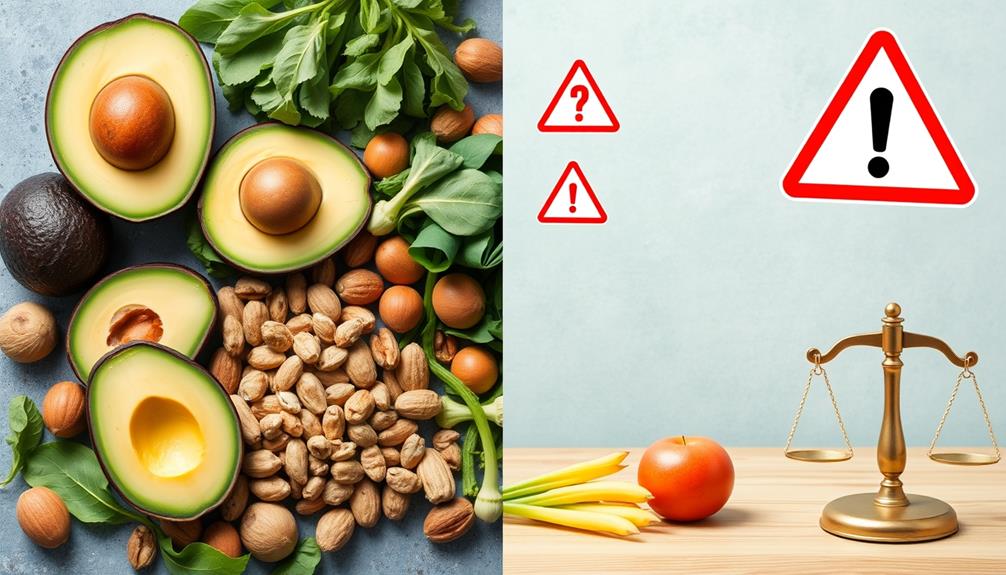
The ketogenic diet offers various health benefits, but it also comes with potential risks that you should consider. One major advantage is its ability to help manage diabetes. Research indicates that the keto diet can considerably reduce insulin levels, with about 60% of participants reversing their type 2 diabetes after one year.
Additionally, if you're looking for weight loss, studies show that the ketogenic diet can promote an average loss of 2 pounds more than low-fat diets, especially in the initial weeks.
However, be aware of the initial side effects commonly referred to as "keto flu." These can include fatigue, headaches, and irritability as your body adjusts to ketosis. Long-term adherence may also lead to nutrient deficiencies if your intake isn't well-planned, emphasizing the need for a balanced approach to vitamins and minerals.
Before diving into the keto diet, it's wise to have a consultation with a healthcare professional, particularly if you have pre-existing health conditions or are on certain medications. This way, you can navigate the potential risks and guarantee the diet supports your health goals effectively.
Practical Tips for Beginners

Starting a ketogenic diet can be exciting but requires careful planning to guarantee success. To kickstart your journey, focus on limiting your daily carbohydrate intake to 20-50 grams. This means prioritizing non-starchy vegetables and incorporating healthy fats into your meals. A well-structured meal plan can help you stay on track with your weight loss goals.
| Meal Type | Examples |
|---|---|
| Breakfast | Avocado and eggs |
| Lunch | Salad with olive oil |
| Dinner | Grilled chicken with broccoli |
| Snacks | Nuts or cheese |
Stay hydrated by drinking 6-8 glasses of water daily. It's essential to replenish electrolytes as low-carb diets can lead to increased water loss; consider adding salt or broth to your diet. Also, don't forget to communicate dietary changes with friends and family, as this support can make maneuvering social situations easier. Use these cooking tips from keto cookbooks or websites to keep your meals exciting while sticking to your keto diet plan. Enjoy the process, and you'll be on your way to achieving your weight loss goals!
Frequently Asked Questions
How Do I Start My Keto Diet for the First Time?
To start your keto diet, reduce carbs to 20-50 grams daily. Focus on high-quality fats, moderate protein, and familiarize yourself with low-carb foods. Meal prep, stay hydrated, and monitor electrolytes to ease the shift.
What Are the 9 Rules of Keto?
When you start your keto journey, remember these nine rules: limit carbs, increase healthy fats, moderate protein, stay hydrated, manage electrolytes, plan meals, prep ahead, monitor progress, and adjust as needed. Your body will thank you!
What Is the Best First Meal for Keto?
For the best first meal on keto, try scrambled eggs cooked in butter, paired with avocado. This high-fat, low-carb option keeps you satisfied and energized, while leafy greens boost nutrients without adding carbs.
What Food Is Not Allowed in Keto?
On a keto diet, you'll need to avoid sugary foods like soda and cakes, grains like rice and pasta, most fruits except berries, legumes, and starchy root vegetables like potatoes to maintain ketosis effectively.
Conclusion
In summary, starting a keto diet can be a transformative journey if you approach it with the right mindset and knowledge. You've got the tools to make informed choices about what to eat and what to avoid. As you begin this path, ask yourself: aren't you worth the effort to prioritize your health and well-being? With dedication and the tips provided, you can embrace the keto lifestyle and enjoy its many benefits.
